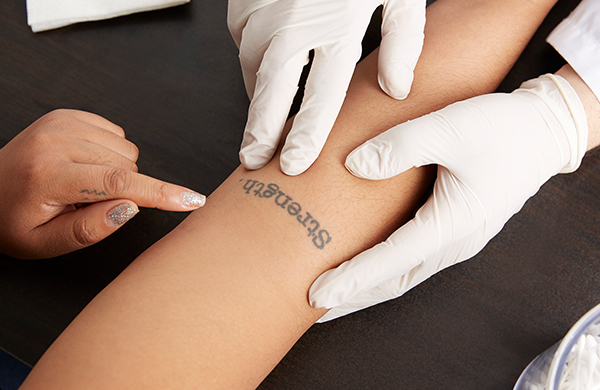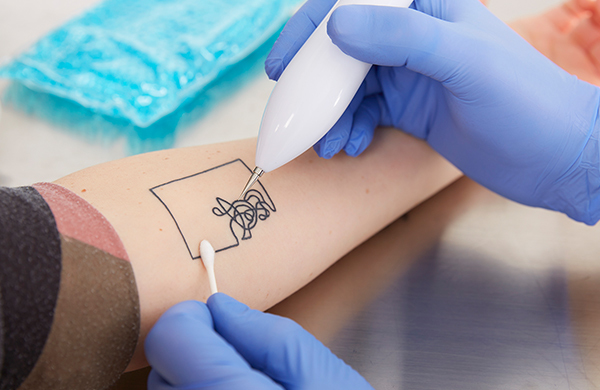
You may have thought you were totally, 100%, no-doubt-about-it sure about that tattoo. But times (and tastes) change, and now that tattoo whether it's the name of a scorned ex-lover or the image of your now-least-favorite member of Menudo just has to go. But don't cut off your limb yet: your best option is laser tattoo removal.
You might have a few questions, like "does tattoo removal hurt?" or "how much does it cost?" To answer those, click on one of the queries below:
Does tattoo removal hurt?
Remember how much it hurt to get the tattoo in the first place? It'll probably hurt about that much, although some people say it hurts more. The most important thing is that you can likely handle it if you're expecting it.
- The best comparison: Many compare it the feeling of a rubber band being snapped against the skin.
- Concerned about the pain? Tell your technician. They can use a topical anesthetic to numb the area (and they may already do this anyway).
How much does tattoo removal cost?
That depends. Note that most tattoo-removal jobs will require more than one session.
- Normally: One tattoo-removal session will run you between $200–$500.
- On our site: You can find tattoo-removal sessions between $150–$200. Click here to find those deals.
Where can I find tattoo removal deals near me?
Gotta get a tattoo off but don't want to spend a ton? Click one of the boxes below to find tattoo removal deals near you:




How does laser tattoo removal work?
It's a really cool and awfully complicated process full of impressive-sounding science terms, but here's the gist:
- The physician uses high-speed, high-temperature lasers (usually called Q-Switch lasers) that attack the ink of the tattoo.
- The laser breaks down the metals that are used to make the ink permanent.
- Once that ink is split into tiny piece, the body can absorb them and the tattoo fades or disappears.

How long does it take to remove a tattoo?
Again, this depends on the tattoo, particularly the tattoo's size, its age (the older, the better), and its colors (red, yellow, white, and other lighter colors are the toughest to remove).
- Each session will typically take between 15–60 minutes.
- The average tattoo-removal job takes about 5–8 sessions. But easier removals take about 3–4 sessions, and difficult jobs can take up to 10 sessions.
- In between those sessions, you could wait anywhere from three weeks to three months. That means, while some tattoos could be gone in a few months, the removal process could take up to a year to be completely effective.
Does tattoo removal leave scars?
It can happen, but it probably won't. The most common reason for scarring to occur has little to do with what happens during a laser tattoo-removal session, and more about what you might do to the area afterward. To mitigate the chance of scarring, follow these instructions:
- Don't smoke.
- If the area starts to scab, don't mess with it. Leave it alone.
- Avoid excessive sun. This can cause blisters.
Are there tattoo removal side effects?
The most-common side effects are redness, soreness, and sensitive skin. But you should discuss the potential for the following with your physician:
- Blisters
- Hyperpigmentation (dark patches of skin)
- Hypopigementation (light patches of skin)
- Infection








